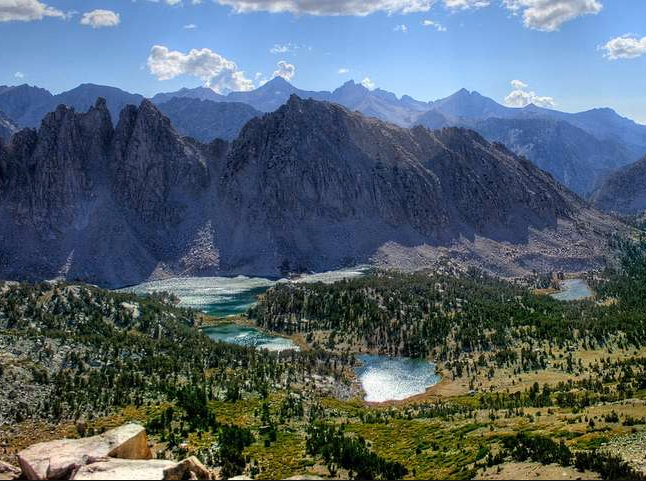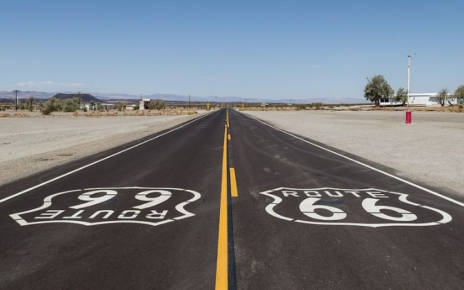The Sierra Nevada Mountains in California, is a mountain range in the Western United States, between the Central Valley of California and the Great Basin. The vast majority of the range lies in the state of California, although the Carson Range spur lies primarily in Nevada. The Sierra Nevada is part of the American Cordillera, a chain of mountain ranges that consists of an almost continuous sequence of such ranges that form the western “backbone” of North America, Central America, South America and Antarctica.
The height of the mountains in theSierra Nevada Mountains increases gradually from north to south. Between Fredonyer Pass and Lake Tahoe, the peaks range from 5,000 feet (1,500 m) to more than 9,000 feet (2,700 m). The crest near Lake Tahoe is roughly 9,000 feet (2,700 m) high, with several peaks approaching the height of Freel Peak (10,881 ft or 3,317 m). Farther south, the highest peak in Yosemite National Park is Mount Lyell(13,120 ft or 3,999 m). The Sierra Nevada Mountains rises to almost 14,000 feet (4,300 m) with Mount Humphreys near Bishop, California. Finally, near Lone Pine, Mount Whitney is at 14,505 feet (4,421 m), the highest point in the contiguous United States.
Notable features:

Mount Tallac above Lake Tahoe
There are several notable geographical features in the Sierra Nevada:
- Lake Tahoe is a large, clear freshwater lake in the northern Sierra Nevada Mountains, with an elevation of 6,225 ft (1,897 m) and an area of 191 sq mi (490 km2). Lake Tahoe lies between the main Sierra and the Carson Range, a spur of the Sierra.
- Hetch Hetchy Valley, Yosemite Valley, Kings Canyon, and Kern Canyon are examples of many glacially-scoured canyons on the west side of the Sierra.
- Yosemite National Park is filled with notable features such as waterfalls, granite domes, high mountains, lakes, and meadows.
- Groves of Giant Sequoias Sequoiadendron giganteum occur along a narrow band of altitude on the western side of the Sierra Nevada. Giant sequoias are the largest trees in the world.
- Two of the largest rivers in California, which form the Central Valley and drain into San Francisco Bay, derive most of their flow from the western slopes of the Sierra Nevada Mountains. The northern of the two is the Sacramento River (which also drains the adjacent Cascade Range and Klamath Range); the southern one is the San Joaquin River.





